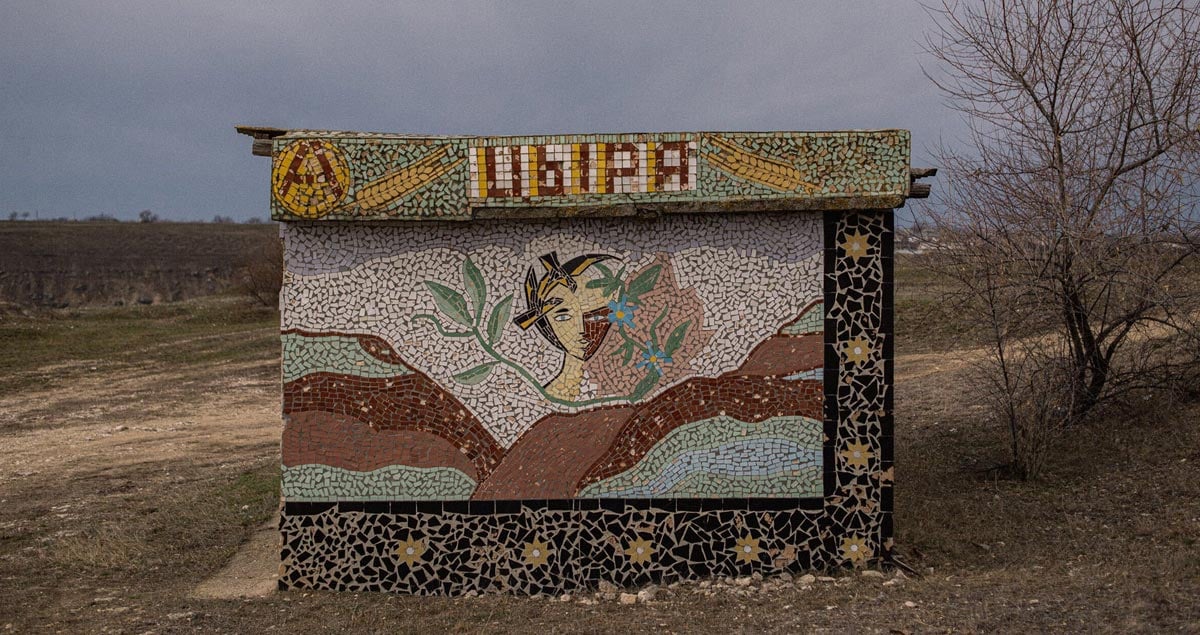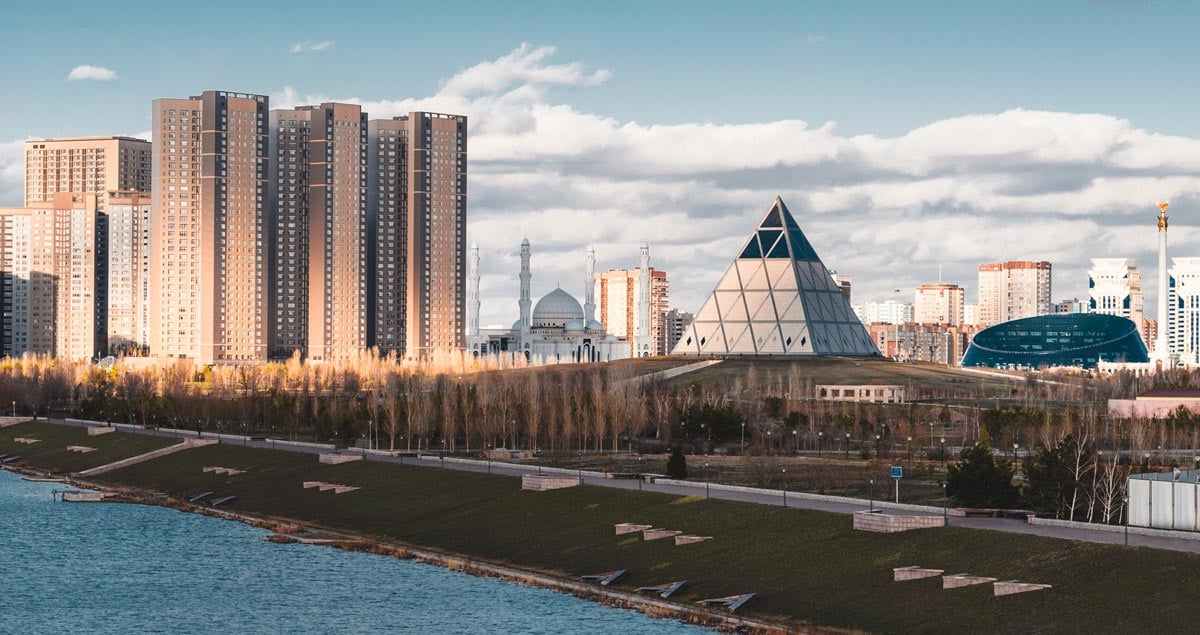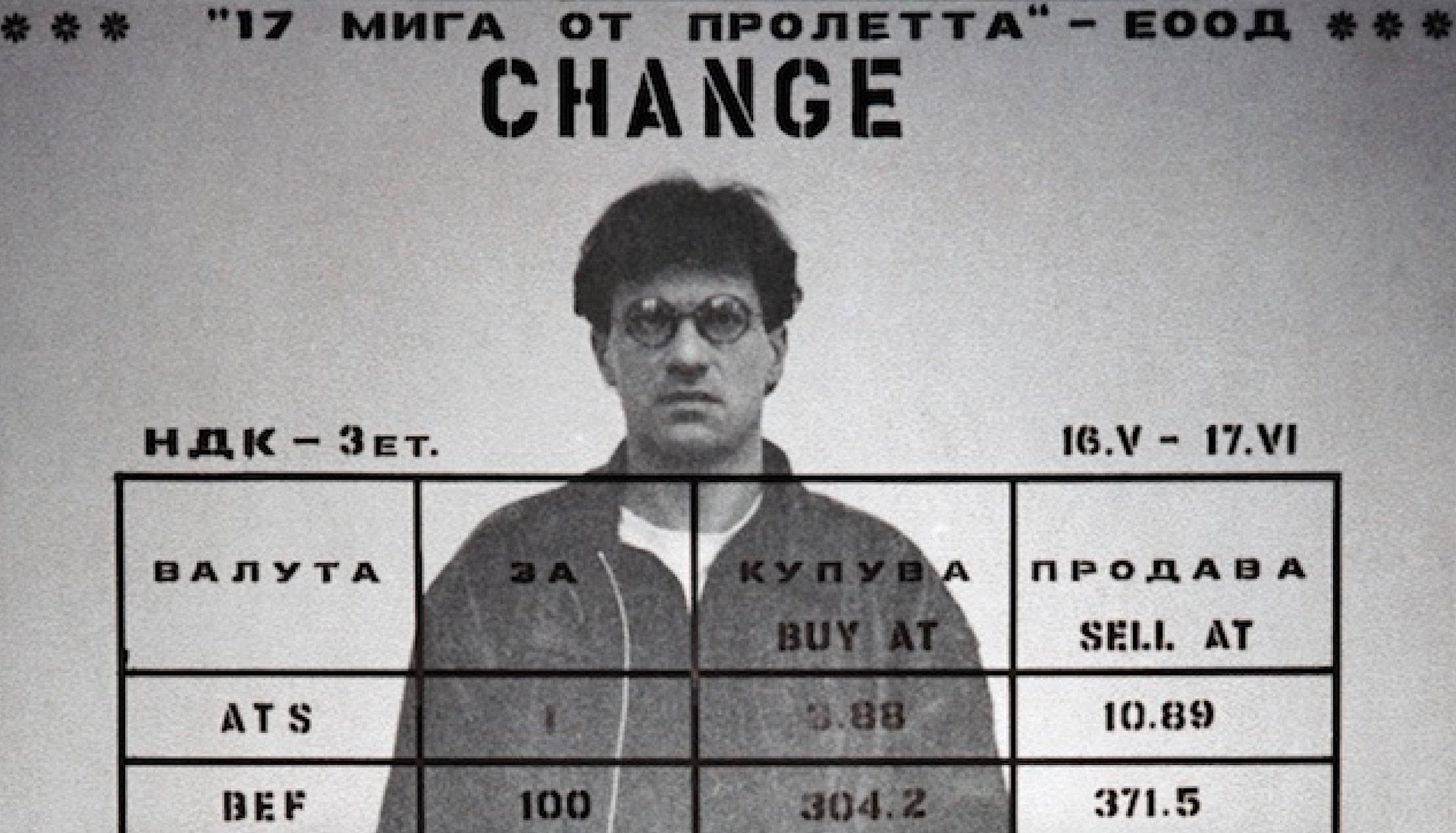Creating new cultures in Eastern Europe’s breakaway states
After The FallAlmost three decades on from the fighting that saw Transnistria, South Ossetia, and Abkhazia become unrecognised states, how has geopolitical limbo shaped the lives of the region's creative ecosystem?
When Kama Katsiya decided to become an architect, her country was in desperate need of rebuilding. The Georgian-Abkhaz War of 1992-93 destroyed Abkhazian towns and villages, including the capital of Sukhumi. Thousands of civilians had been killed in the fighting. Katsiya wanted to do more than just rebuild infrastructure and shelter; she wanted to create buildings that were both functional and aesthetically forward thinking. “[Architecture] wasn’t fashionable at the time: what was being built in the 90s could hardly be called architecture,” she says. “Architects were looked down on, and the quality of architecture and aesthetics was pretty low too.”
The Georgian-Abkhaz War was just one of several land and border disputes that erupted into open conflict as the Soviet Union slowly disintegrated. In the Caucasus, the regions of Abkhazia and South Ossetia, both previously part of Soviet Georgia, started campaigning to become separate states. The issue eventually sparked violent conflict erupted between Georgian troops and separatist forces, from 5 January 1991 to 24 June 1992 in South Ossetia, and between 14 Aug 1992 and 27 Sept 1993 in Abkhazia. Ultimately, both wars ended in a deadlock.
Women walk past the statue of Alexander Suvorov in Tiraspol, Transnistria. Image: Marco Fieber/Flickr under a CC licence
As the fighting died down, civilians were slowly able to rebuild some of the infrastructure they had lost: housing, businesses, hospitals. But culturally, both regions were left in limbo. The conflict saw both Abkhazia and South Ossetia become de-facto breakaway states: self-governing, yet unrecognised and considered illegitimate on the global stage. Today, officials in both of the regions are backed by Russia, which remains one of the few countries to recognise the areas as separate entities, partly because it allows the Kremlin to keep a grip over Georgia.
For creatives living in these areas of frozen conflict, this non-recognition provides unique challenges. For global art dealers and institutions, Abkhazia and South Ossetia simply do not exist, isolating young creatives in a bureaucratic quagmire. But it also complicates the task of reviving the areas’ cultural ecosystems, which are a breeding ground for new ideas and possibilities. Art and culture are often underappreciated for the role they play in post-conflict recovery. Art asks for introspection and reflection. History shows us it can unite audiences, nurture a sense of togetherness, and forge bonds across political and geographic divides.
For many young creatives — architects and artists, designers, musicians and writers — living in breakaway states, that work has already begun. Building a shared vision becomes near impossible, however, when any imagined future is mired in the degree of uncertainty that these breakaway states are stuck in. This incertitude halts investment, innovation, and inhibits any uniting creative vision.
The after-effects of the conflicts are also holding back cultural development on a very practical level. Photographer Ramin Mazur grew up in Transnistria, a breakaway state in Moldova, bordering Ukraine. Much like in Abkhazia and South Ossetia, separatists there, backed by the Kremlin, also declared independence, leading to a war that lasted from 2 November 1990 to 21 July 1992. A similar deadlock has also left the regime unrecognised on the global stage, while the state itself is supported by Russia and used as a bargaining chip in the relation with Moldova.
“There are no places [in Transnistria] where artists can actually communicate about who we are and what we are,” he says. “There are no venues for discourse.” But artists in Transnistria are not only lacking freedom of speech, infrastructure, or the cultural spaces to show their work; they’re also missing the crowds needed to fill them. Travel between Transnistria and Moldova is relatively trouble-free — “anyone with a Transnistrian passport has at least two others,” says Mazur — and many young people emigrate in a bid to find both work and a better life.
“There’s not much work, even in [the capital,] Tiraspol. No one is waiting for art in the public space. If you want to do something personal and forward thinking, it’s not what people expect. My personal opinion is that it’s a mix of misanthropy, and the flux of people moving away [from Transnistria] to other countries like Moldova,” says Mazur. “There’s not the critical mass that we need [to make things happen]. If you want to do something creative, at some point you face the fact that you need to leave Transnistria.”
But while this outward emigration has triggered an inevitable brain drain, it has also given Transnistrian artists the chance to connect with a wider and more established creative scene. Artists living in Abkhazia and South Ossetia, meanwhile, face a more hostile political environment. The war in Abkhazia, which was punctured by the ethnic-cleansing of Georgian communities, has left as yet unhealed wounds. Similarly, many South Ossetians and Abkhazian civilians feel threatened by fiery Georgian rhetoric on taking the areas back under their direct control. As a result, artists from breakaway states who find themselves in Tbilisi often find little in the way of creative solidarity.
“Artists in Abkhazia are in total isolation right now. They blame Georgia; partially they’re right. But the truth lies between two perspectives. We are all victims”
Poet and writer Paata Shamugia fled the Abkhaz-Georgian War with his family when he was 10 years old. His experiences as a refugee shaped him irrevocably, but he doesn’t write about Abkhazia in his work. “I avoid thinking about Abkhazia,” he says. “It’s still my home; there were people I loved there: neighbours, teachers. I think about those people, but without the entire context. Just as humans.”
While Shamugia has a very public profile as the head of writers’ group PEN Georgia, he says that other Abkhaz writers in Georgia often shun the spotlight to avoid becoming the centre of any new geo-political wrangling. Some hide their names or avoid interviews. Most Abkhazian writers simply avoid Georgia altogether, hoping to avoid any accusations that they are “harming Abkhazia” by associating with Tbilisi’s cultural scene. While some Abkhazian artists work with creative communities in Moscow or elsewhere, many others miss out on the stability that comes from close regional connections.
“There are very talented people there who write great poetry and great novels [in Abkhazia]. It’s a rich culture. It’s just that people don’t know about it,” says Shamugia.
“Artists in Abkhazia are in total isolation right now. They blame Georgia; partially they’re right. But the truth lies between two perspectives. We are all victims.”
Ultimately, both situations leave Abkhazia, South Ossetia, and Transnistria facing a similar problem: the world’s view of each of these breakaway republics is inevitably filtered through an outside gaze. Many foreign reporters and photographers inevitably end up reproducing stories on familiar tropes, presenting each area as a still-Soviet bubble trapped in time. At one time, Mazur also took on work photographing Transnistria for foreign magazines. “I look on these assignments in 2013, when I was younger and more naïve and had less experience of working with stereotypes,” he says. “People come to Transnistria, walk around and do some photo projects — younger photographers who are fed with all of these [outside] articles — and they reproduce that narrative. I’ve since had assignments that I’ve declined, and I guess I declined them because I knew it would be reproducing the same story.”
Among other projects, Mazur has since produced his series Left Bank, which delves into the photographer’s own sense of identity and belonging: both as a half-Ukrainian ethnic, and as a teenager who left Transnistria for Moldova. Intimate images are mixed in with the same landscapes peppered with war memorials that usually typify Tiraspol. In one picture, a woman gazes from a kitchen window bathed in terracotta light. In another, a young couple are wrapped among blankets with their family cat. “[The series is] looking at what home is — and what Transnistria is. I didn’t have too many childhood memories [from my hometown]. So, this work was about coming back and reclaiming all of those memories that I’d made in the 90s,” says Mazur. “I don’t think finding a ‘Transnistrian identity’ is the final step. We talk a lot about identities, but it shouldn’t be just one thing. ‘Transnistrian identity’ is a step on a flexible path.”
The idea of using art to explore the identity of countries still somewhat caught in a state of limbo also appeals to Transnistrian photographer Anton Polyakov. “I believe that I was lucky to be born in Transnistria and to have the opportunity to explore this region,” he says. He feels that the limitations and isolation that come with living in Transnistria have helped him to improve his work, by allowing him to follow his own interests. They have included his series, Transnistria Conglomerate, which saw him travel across the breakaway republic to build up his own mosaic of Transnistrian reality. “Over time, I began to focus on what it means to be a resident of this region, and whether it was possible for me to get away from a specific place and create my own alternative reality,” he says. “It’s more comfortable for me to work in small territories like Transnistria, so that I can focus on the details of the place.”
Yet, while Polyakov focuses on details, he is also keenly aware that Transnistria has come of age in a world that is increasingly focused on the bigger picture. Amid this rapid globalisation, and in the digital age, he says, even the idea of forming a single local, contemporary culture should be held up to scrutiny. “[In terms of culture], everything has been blurred, and in many ways the Internet has contributed greatly to this,” he says. “It seems to me that the time has already passed when it was possible to talk about some kind of separate unique culture or identity inherent in individual countries or states.”
But for now, at least some artists in Transnistria, South Ossetia, and Abkhazia feel as if their hard work is paying off. Kama Katsiya was forced to forge her own path early on, after the Georgian-Abkhaz War of 1992-93 destroyed what was left of the area’s cultural education. But the independence was also freeing. “I was immersed into these large and serious projects from the very beginning, without help, without prompting, without insurance,” she says. “It was a huge burden, but at the same time it pushed me to expand what I could do. I had to come up with things from scratch, find the solutions I needed in order to achieve the results I wanted.”
Today she leads her own architectural bureau, the Kama Katsiya Creative Group, specialising in low-rise architecture and interior and exterior design. She also teaches graphic design at the Faculty of Fine Arts for Abkhaz State University, and works with a group of colleagues and enthusiasts on Khara Khakalak, a non-profit engaged in urbanism and education in Sukhumi and Ochamchire. Slowly, new generations are rebuilding the area not just as a practical method of survival, but in a way that reflects their needs and makes Abkhazia’s streets a pleasant and more enjoyable place for residents. Now young Abkhazians will often ask her for advice on how to train to be an architect themselves.
“[Contemporary Abkhazian culture is] definitely there, taking its own difficult, thorny path. We don’t have many people here, and there’s a lot we still have to do. Even in a small community, there should be singers, poets, artists, and architects,” says Katsiya. “I don’t think that we need to compete for cultural greatness with large nations, but we need to keep studying ourselves and our identity. Fortunately, we have our folk culture, our ancient language, and customs. But it is important not just to look to the archaic, but to develop — to adapt our folk culture into a modern one.”


